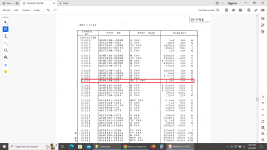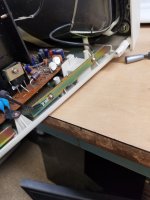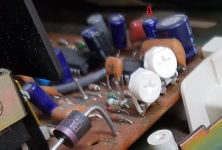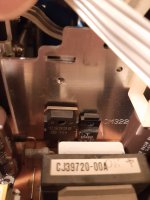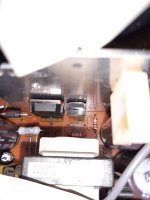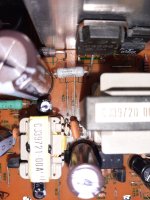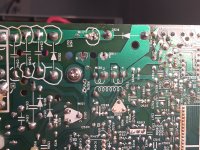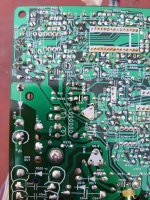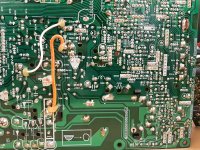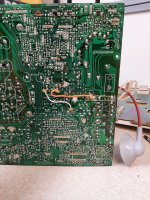I have been pondering the best way to get on with this repair. If the VDU was in my lab I would have connected the H output stage to a variable DC supply. But we don't have that luxury.
One way to reduce the voltage to the H output stage would be with an appropriate value power resistor, but it is hard to calculate the Ohms value and the required power rating, because we don't know the current consumption.
So I have come up with an idea, perhaps a little unorthodox, but I think it will work, if you are prepared to splash out $20 or so on a part.
The idea is to cut the B+ feed to the H output stage and fit a Power Zener diode in series. If we use a 50W rated part, and screw it to a reasonable sized chunk of metal, say about 6 x 6 inches approx or more, it will handle the power. You can run a couple of wires to it and have it a foot or more away from the VDU, it will run quite warm I would expect. I would recommend adding some additional capacitance as indicated, you can tack a spare 100uF 160V cap across the 10uF that is there.
Replaces NTE5275A. Polarity: Anode Case. Case Size: DO-5.
www.ebay.com
This will knock 50V off the supply voltage to the H output stage and I think will bring the EHT down, to likely in the range of 18 to 24kV , and allow the VDU to run without the shutdown deploying and at least in a safe enough condition not to get a high voltage related failure, while we are trying to figure out what has happened. Certainly if this prevents the shutdown, the EHT voltage will be in the range the manufacturers thought the circuitry could tolerate.
The best estimates we can make currently is that the EHT is about 8.2/5.6 (the OP amp voltages for the shutdown circuit, the normal being 5.6 and you measured 8.2) or about 1.46 times over the level that trips the shutdown, or also roughly 34/24 or about 1.4 times what it should be, if we assumed that the usual EHT was around 24kV. The buck regulator probably is running at its max duty cycle (if a shorted transistor is excluded) and I'd expect at least 110V out of it (not the full 125 as it has to be in a switching mode). So likely if we reduce that output by 50V, the supply to the H output stage will be around 60V, which should be ok, but the exact value depends on what the buck supply is putting out in this fault condition. I wouldn't recommend trying to check that by deactivating the shutdown again, that would be pushing our luck.
In addition, if the 54V at the emitter of the buck transistor, is the value that is normally there in the scan mode where it was tested with the shut down deactivated, then we can deduce that likely the 54V is about 54 x 1.46 = 78V at least. in this case we would in fact have to only knock 25v or 30V off it. So I think the 50V reduction will be more than enough. Though we could always move to a lower voltage zener. We can always measure the voltage if the VDU stays running.
Then, we will be able to scope the OP amp and buck regulator circuit and find out what has gone wrong.

